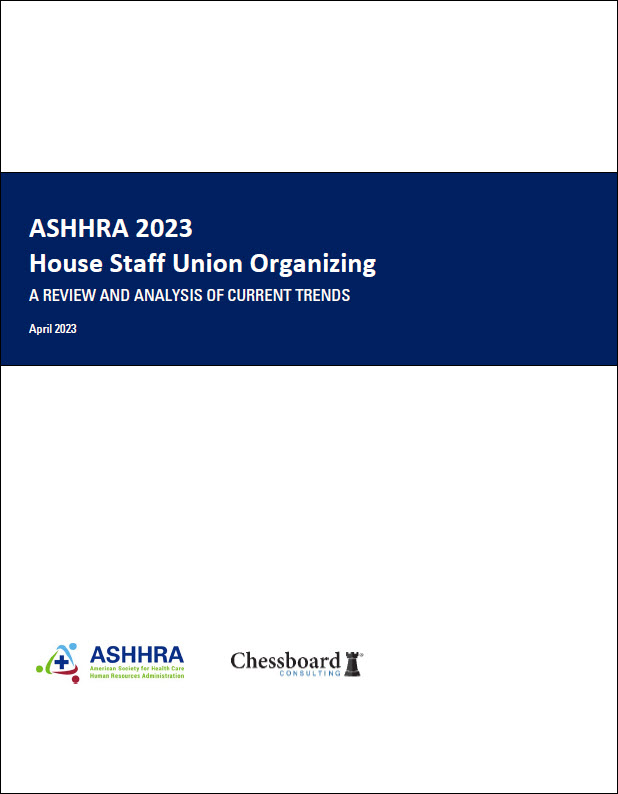Thursday March 30, 2023
House Staff Union Organizing
A REVIEW AND ANALYSIS OF CURRENT TRENDS
April 2023
Executive Summary
This briefing offers a summary review and analysis of union organizing among resident physicians, interns and fellows (hereafter “House Staff”). It includes important historical background and context helpful to understanding the wave of House Staff organizing currently sweeping the country. And we provide insight
into the specific topics central to most of today’s House Staff organizing campaigns, as well as the tools used by today’s tech-savvy unions and House Staff cohorts to build support for union representation.
The largest and most active union involved in organizing House Staff is – without question – the Committee of Interns and Residents, an affiliate of the Service Employees International Union (CIR-SEIU). In fact, CIRSEIU almost fully “owns” this organizing space. Now boasting more than 24,000 members, the union’s
membership has grown by more than 60% just since 2020.1 In fact, in the first three months of 2023, CIR-SEIU filed more petitions to represent House Staff – or publicly announced organizing campaigns – than during any full 12-month period since 1997.
CIR-SEIU has a remarkable win rate, winning 100% of their elections held since 2020. In fact, a review of petition and election activity available from Bloomberg Law shows the union lost only two elections in recent history (a 2018 election involving CarePoint Bayonne Medical Center in Newark, NJ and a 2014 election involving Mount Sinai Beth Israel in New York, although CIR-SEIU represents House Staff at other Mount Sinai locations in New York).
Recent and current CIR-SEIU campaigns are now impacting some of the largest names in healthcare around the country, including Massachusetts General Brigham/Harvard Medical School, George Washington University Hospital, and Stanford Health. At these institutions – and nearly 100% of institutions where House Staff are already unionized – registered nurses are also unionized. The perceived pay disparity between what nurses earn for every hour worked (i.e., nurses’ hourly wage) and what House Staff earn when factoring their annual salary versus actual hours worked, might lend non-union House Staff to
compare themselves to their unionized registered nurse colleagues.
As CIR-SEIU promotes news coverage of their organizing campaigns from high-profile outlets like The Washington Post, The Wall Street Journal, The Boston Globe and others, CIR-SEIU simultaneously leverages social media (Instagram, Twitter, Facebook, TikTok, and YouTube) and technology like video conferencing to advance their efforts and cement momentum for organizing activity.
With “match day” 2023 having just occurred (March 2023), a new cohort of residents, interns and fellows are about to begin their post-graduate training and a new employment experience with hospitals and medical centers around the country. Therefore, now is the time for hospital leaders to advance their understanding of the factors fueling House Staff organizing – factors that extend far beyond a desire for “more pay and better benefits.”
As Dr. Josephine Valenzuela, a resident in Emergency Medicine at UCSF/SFGH put it, “It’s about having strength in numbers to basically deal with big organizations that are bigger than any one person.”

